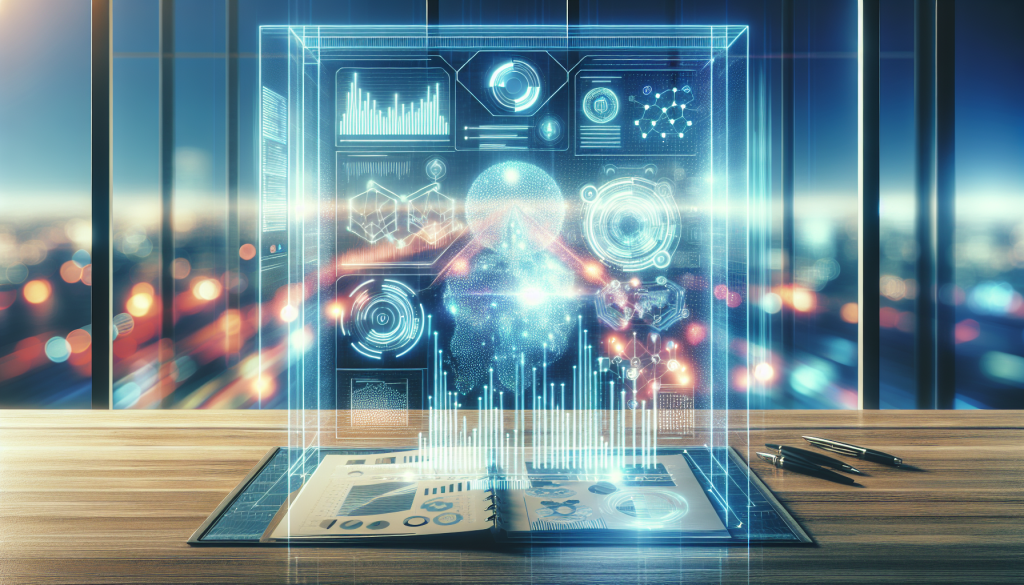
In the age of rapid technological advancement, AI-driven innovation is standing at the forefront, reshaping the landscape of both industries and creativity. With its profound capabilities, artificial intelligence is no longer just an auxiliary tool; it is a transformative force that automatizes processes, enhances decision-making, and revolutionizes creativity. This pervasive presence is not confined to a single domain but spans across industries, driving unprecedented levels of efficiency, creativity, and profitability.
Understanding AI-Driven Innovation
AI-driven innovation refers to the application of artificial intelligence technologies to various innovation processes. By leveraging capabilities such as machine learning, natural language processing, and computer vision, AI is redefining operational paradigms. In industries, it aids in automating routine tasks, extracting insightful data, and enhancing customer experience through personalized engagements.
Industries like healthcare, automotive, finance, and entertainment have already experienced significant shifts due to AI-driven innovation. For instance, in healthcare, AI algorithms are diagnosing diseases with unparalleled accuracy, while in finance, AI models predict market trends with precision. This signifies a transformational journey where AI is an enabler of smarter decisions, once unimaginable speeds, and previously unattainable scales.
Impact on Creativity
While the impact on industries is notable, AI’s intersection with creativity is nothing short of revolutionary. It may seem counterintuitive, but AI is rapidly catching up to human creativity. It’s not only assisting creators in fields like art, music, and literature but also paving the way for new forms of creative expression.
Generative AI, a subset of AI, exemplifies this transformation. By learning from vast datasets, it has the unique ability to generate new content. This includes creating melodies, painting intricate art pieces, and writing prose. The implication of this technology means that the creative process can be democratized, allowing anyone with access to these tools the potential to create groundbreaking work without traditional skill barriers.
AI Reinventing Innovation
AI-driven innovation is not just supporting the creative process; it’s actively reinventing it. With AI models, industries are exploring new ways of invention, breaking traditional constraints and rendering processes more efficient. For example, in research and development sectors, AI models are providing deeper insights into scientific domains that fast-track innovations.
A compelling example is using AI for drug discovery which significantly reduces the time and cost compared to traditional methods. AI algorithms are exploring thousands of compounds in silico, identifying potential candidates for successful drug development.
Challenges and Considerations
Despite the transformative potential of AI-driven innovation, it is imperative to address underlying challenges and consider ethical dimensions. Concerns about data privacy, AI bias, and the displacement of human labor require thoughtful deliberations to ensure equitable AI innovations.
Furthermore, the ability of AI to create raises pertinent questions about intellectual property rights. Who owns a work of art or a song generated by an AI model? Such questions depict the evolving landscape that encompasses both legal frameworks and societal norms.
The Future Landscape
As AI continues to evolve, the future of AI-driven innovation looks promising. Its potential to outperform human creativity in specific domains signifies an exciting era of co-creation. Rather than seeing AI as a competitor, embracing it as a collaborator could lead to uncharted territories of human potential.
Industries will likely witness an era where AI-driven innovation is not only an adjunct to existing systems but a fundamental component guiding strategic decisions and fostering an innovative ecosystem. Boards of innovation worldwide recognize that the strategic implementation of AI will remain a cornerstone of competitive advantage in the rapidly evolving global marketplace.
As businesses and creative professionals embrace AI-driven innovation, adapting to these technologies becomes a necessity rather than an option. For industries and individuals alike, the future is about harnessing the synergy between human ingenuity and AI’s capabilities, unlocking a new horizon of innovation and creativity.
In conclusion, AI-driven innovation is more than a technological trend; it represents a paradigm shift that is here to stay. By revolutionizing industries and stretching the boundaries of creativity, AI stands as a testament to human advancement, steering us towards an innovative future filled with endless possibilities.